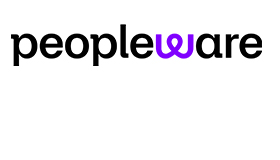Writing for injixo, Charles Watson explores how to successfully manage agent vacations in a call centre.
One of the things that has the biggest impact on the morale of your call centre agents is the vacation planning process.
There are many ways to manage time-off. If you can imagine a method for allotting and scheduling vacation time, it’s probably being done somewhere. We’ll go through the methods a bit later on, but let me start out with why this is so critical.
Let’s face it, being a front-line contact centre agent is one of the most challenging jobs out there. Handling calls and contacts back-to-back all day, being the face of the business when things go wrong, and dealing with irate and impatient customers creates stress.
My career in contact centres started on the phones for an airline, and I remember what it was like to be on the front line every day. In this environment, vacation time is a welcome break.
It’s an opportunity to recharge your batteries and get away from the pressure. It’s fair to say that agents are usually more interested in the time they are not working than the time they are working.
The 3 Steps of Vacation Planning
Step 1: Forecasting
It starts with forecasting, in particular the capacity plan for the coming year. Once you have your workload and FTE requirement set for each month of the year, calculate your shrinkage. Some shrinkage simply reflects reality and can’t be managed.
For example, you may have more people call in sick during the winter. Some shrinkage can be managed – vacation time falls into this category.
The best way to start this process is to calculate the vacation quota as the inverse of the staffing requirement each month.
Months with the highest staffing requirement have the lowest vacation quota, and vice versa. This approach helps to smooth out your monthly coverage. In an ideal world, you’d have little to no variation in staffing requirements from month to month. In the real world, required staffing has peaks and valleys over the year.
By reducing the vacation quota during busy months, you won’t have to fill the gap with temps or overtime. By increasing quota during quiet months, you won’t be stuck with wasteful overstaffing.
Step 2: Establish Quotas
Now you have a clear view of where the vacation time would be if employee preference weren’t a factor. However, the month-to-month patterns of the business may not align with the patterns of when agents actually want to take vacation.
Leveraging workforce management software, you can start with the quotas you calculated in step 1, then have your employees make time-off requests.
Once you see where they actually want to take time-off, you can make decisions on whether to increase or decrease the monthly quotas. If you do increase the vacation quota in a certain month, you can compensate by moving shrinkage events such as coaching or training to another month.
There’s usually a way to make it work. You just need to make sure you have the right tools to do the forecasting, gather the employee requests, and then do a comparison.
Step 3: Process Vacation Requests
Once you have quotas in place, you can start accepting vacation requests from agents. The simplest way is to set up a vacation quota per day and let agents request time-off on a first-come, first-served basis. This is easy because it doesn’t really require much effort to administer.
It also means that the decision about whether to grant the vacation can be done quickly or even automatically, with the right tools.
Agents love getting a quick response to time-off requests. If a date has nobody off and you are comfortable with 2 people being absent, then the first two to put their names in will get the day off.
A refinement of this method is to have a quota that varies by day of the week or week of the month, with exceptions for special periods such as peak season.
The first-come-first-served method can create a sense of unfairness for agents. Those with great performance or with long tenure with the company don’t get any credit.
Vacation is simply granted to those who get in quickly when the vacation window is opened. The most important group of agents are your longest-serving and your best performers.
You want to keep them happy and it can make sense to give them some priority when granting vacation requests.
The exact opposite of simple first-come, first-served is to take an extremely complicated approach to managing time-off.
You can create a complex system with several different vacation groups within a day, and a sophisticated matrix that combines a bunch of performance metrics, seniority, and other factors such as attendance.
Some centres get overly complex because there is a desire to leverage the time-off process to incentivize and penalize behaviors in the contact centre.
That’s not a bad idea, but when the process becomes excessively complex, nobody understands it. If they don’t understand it, then they don’t trust it. The best approaches carefully blend incentives and simplicity into the process. It takes time, thought, and effort to get this balance right.
There is no one-size-fits-all solution. It depends on your company’s values, your industry, or your geography.
If you are going to take performance and seniority into account, a great place to start is to create a ranking system with 50% of the ranking based on overall performance and 50% on seniority.
By doing this, you incentivize people to perform well and you incentivize people who have been with the company for a long time. By having performance as 50% of the target, you also penalize long-term employees who are just coasting and not really trying.
Another tip is to let agents request vacation for the coming year in the fourth quarter of the current year. Make 50–75% of the slots available for requesting – you need some flexibility as you progress through the year.
You may see higher volume than expected in one month and lower volume in another month. Not releasing the full vacation quota at the start allows you to make adjustments during the year.
Conclusion
Vacation is an emotive topic in every contact centre, so it’s vital to apply the same rigor to vacation planning that you apply to all the other parts of the planning process. You need to start with a forecast and ideally allocate the vacation quota across the months based on the inverse of workload.
It’s really helpful to have a simple, flexible workforce management (WFM) system to support your time off processes.
If you don’t already have WFM software, or are looking to make a change, talk to several vendors and see how well they accommodate your scheduling needs in the area of time of vacation planning.
This blog post has been re-published by kind permission of Peopleware – View the Original Article
For more information about Peopleware - visit the Peopleware Website
Call Centre Helper is not responsible for the content of these guest blog posts. The opinions expressed in this article are those of the author, and do not necessarily reflect those of Call Centre Helper.
Author: Peopleware
Published On: 3rd Jul 2023 - Last modified: 9th Dec 2024
Read more about - Guest Blogs, Peopleware






 Peopleware is a leading workforce management (WFM) solution, trusted by over 500,000 users in 30+ countries. With smart forecasting, automated scheduling and real-time management, organizations can optimize workforce efficiency and keep work aligned with demand. From precise time tracking to flexible planning, Peopleware helps organizations boost operational efficiency and foster a more engaged, productive workforce.
Peopleware is a leading workforce management (WFM) solution, trusted by over 500,000 users in 30+ countries. With smart forecasting, automated scheduling and real-time management, organizations can optimize workforce efficiency and keep work aligned with demand. From precise time tracking to flexible planning, Peopleware helps organizations boost operational efficiency and foster a more engaged, productive workforce. 































